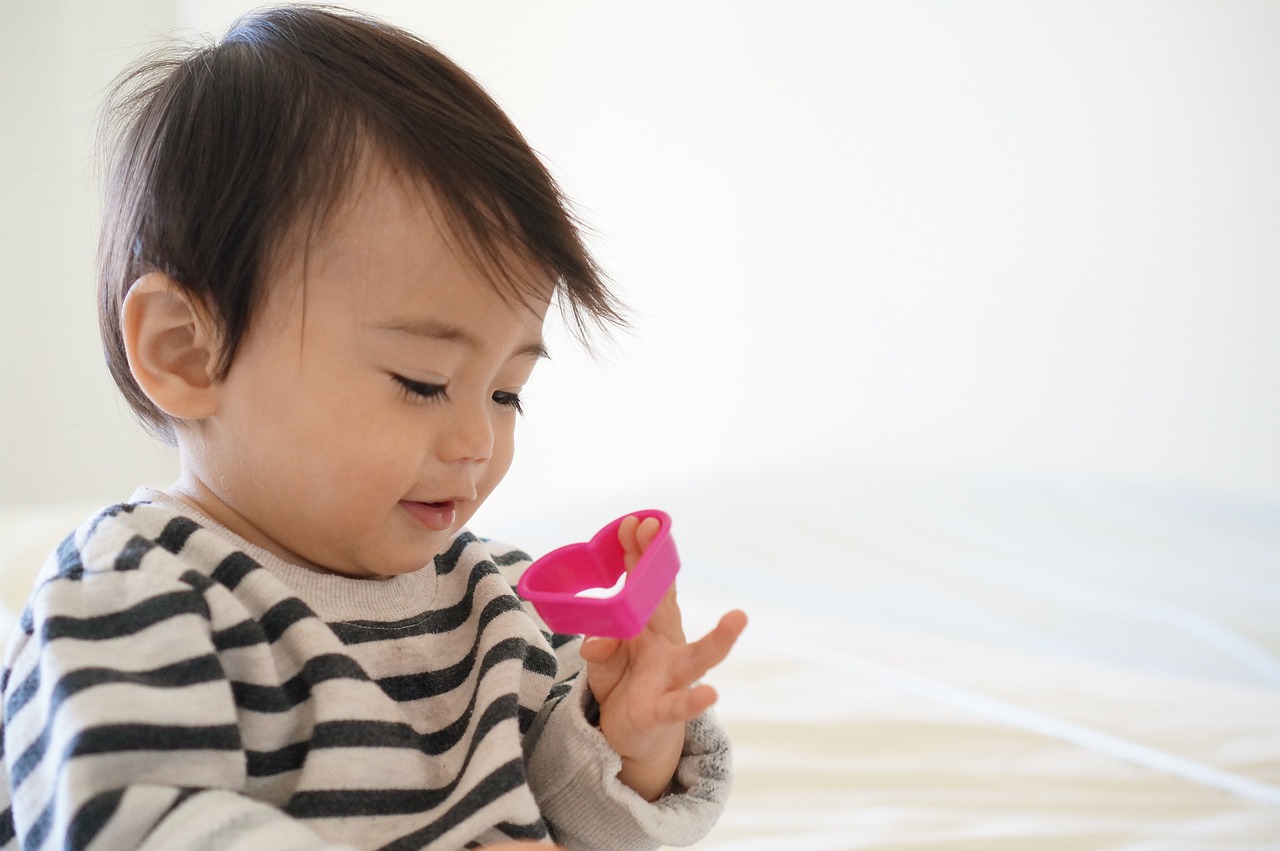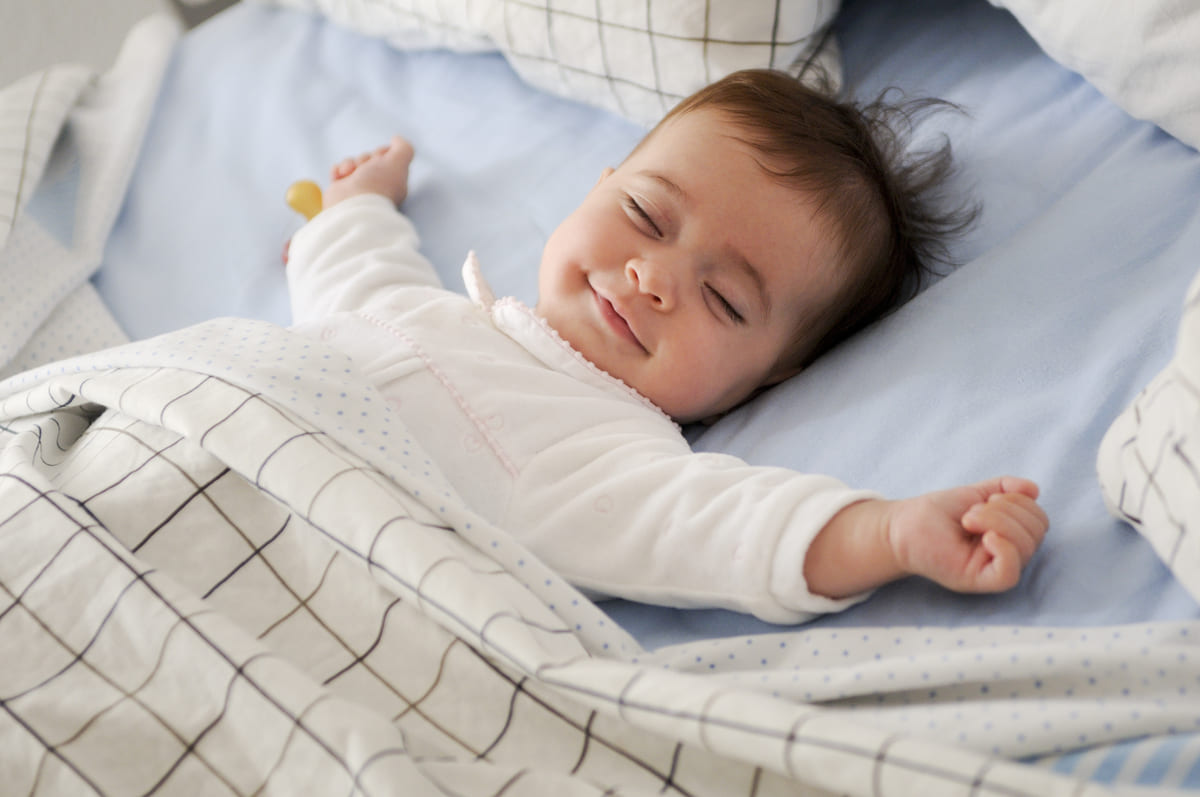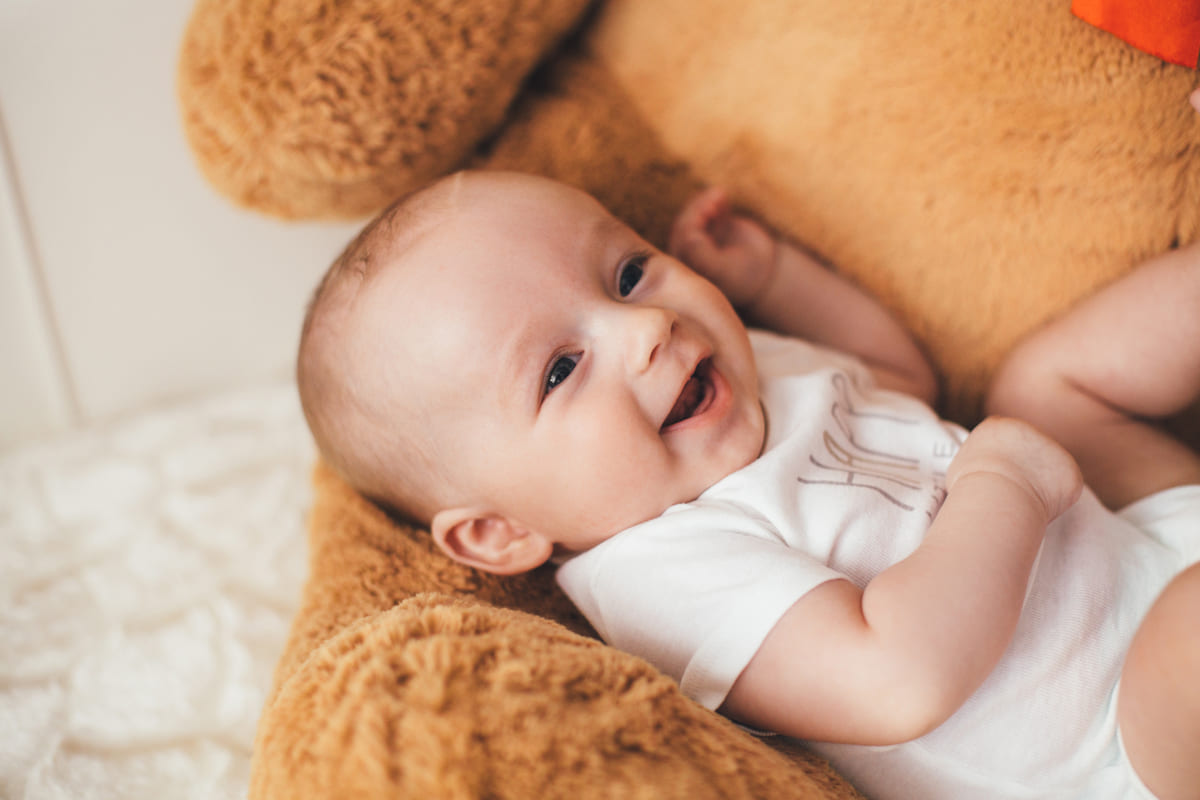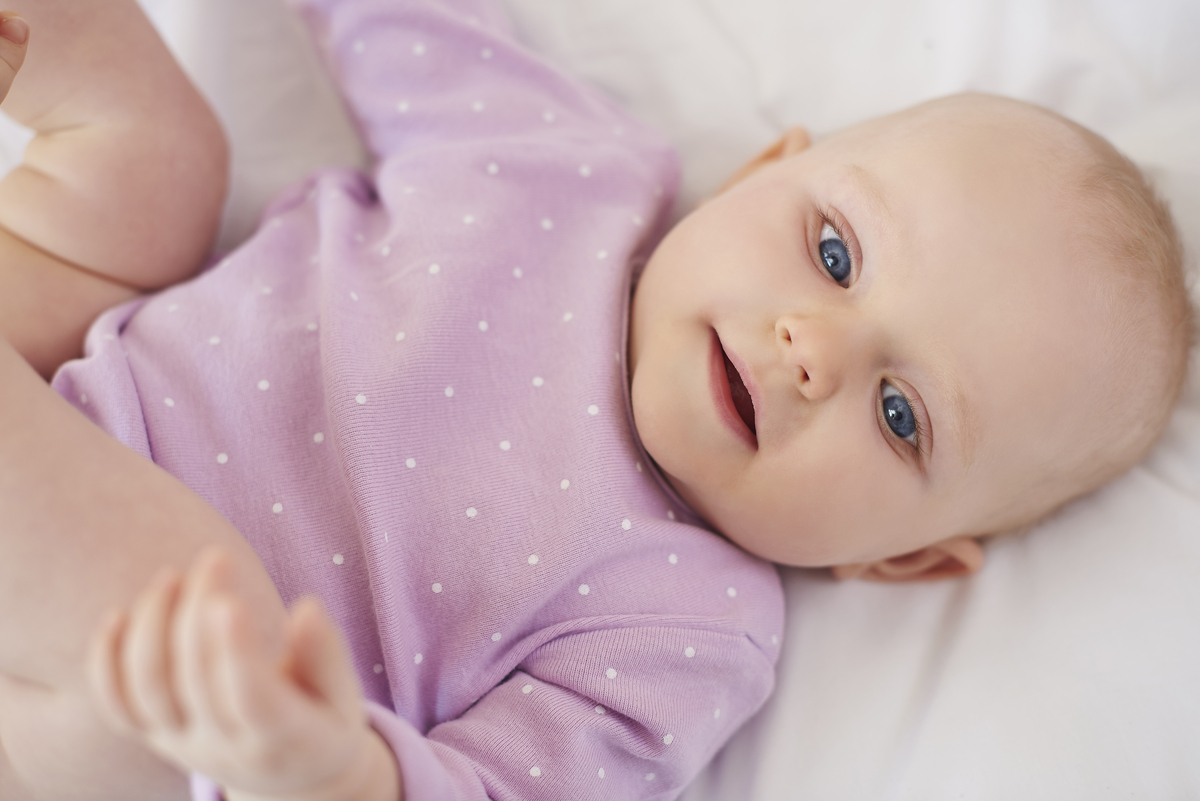
Have you ever heard about the mysterious phenomenon of why newborn babies sometimes laugh when they are asleep? It might come as a surprise to many that such behavior can occur in sleep, but research has indicated that these episodes of laughter while sleeping is actually quite common.
Babies sleep differently than adults, and studies have indicated that babies can move through various stages of sleep very quickly. But why do newborns laugh while they sleep? In this blog post, we are going to delve into the facts and theories behind this curious phenomenon.
Why do babies laugh in their sleep?
Often, people laugh while sleeping; this phenomenon is referred to as hypnogely. It is thought that babies laugh in their sleep because they are processing happy memories or reacting to something from their dreams. When a baby’s body enters a relaxed state, their facial muscles form adorable and comforting smiles—particularly during REM sleep or Dream mode. This is because the infant does not need to expend much energy while they are in this stage of rest.
To comprehend the phenomena of laughter during sleep, it is essential to be acquainted with two distinct kinds of slumber: rapid eye movement (REM) and non-REM. Baby smiles in non-REM sleep usually occur when a baby is transitioning from one phase to another, from light to deep sleeping. On the other hand, REM sleep (Dream Mode) is characterized by rapid eye movements, which is when babies are most likely to make sweet little faces and laugh out loud.
Generally, newborn baby smiles should not be taken as a sign of happiness but rather as an indication of the physiological processes taking place in the baby’s body. It is important to remember that active sleep or deep sleep is vital for a baby’s development and growth. This is why parents should not disturb the little ones when they sleep—even if it seems like their child is having a great time in dreamland. Nurturing a peaceful environment for babies to rest can help foster their growth into healthy and happy toddlers and beyond!
What is the REM sleep baby cycle?
The REM sleep baby cycle is the pattern of sleep experienced by babies. During the first few months of life, newborns experience a series of alternating periods of deep sleep and REM (rapid eye movement) sleep. Deep sleep is when babies are at their most restful, while REM is considered an active type of sleep characterized by faster breathing and eye movements.
During REM sleep, babies’ brains are very active as they process sensory experiences and form memories. The baby cycle progresses from deep sleep to REM sleep over the course of several hours before beginning anew. This cycle is believed to be essential for proper brain development in infants, allowing them to learn and remember important information about their environment. Babies smile during REM sleep, and the movements of the eyes suggest that they are “dreaming” during this time.
However, sometimes you can see your baby smiling, laughing, or even giggling while sleeping. REM sleep behavior disorder, an uncommon condition in babies, can cause them to act out their dreams and even wake up during them. If you are concerned about your baby’s sleep patterns, it is important to talk to a healthcare provider. Hence Non-REM deeper sleep cycle has stages through which babies go through on a regular basis, and they are:

Stages of NON-REM baby sleep cycle:
As mentioned above, babies dream during the REM sleep cycle starts with a period of light sleep, followed by deep sleep. In the last stage of sleep, babies experience REM and may move their eyes rapidly beneath their closed eyelids. However, baby laughing or smiling during the REM cycle is quite common and nothing to worry about. Look at the below stages of Non-REM (Non rapid eye movement) sleep cycles:
Stage: 1:
This is the brief yet crucial stage of transitioning from wakefulness to sleep. As your baby’s breathing rate decreases, their muscles relax, and brain activity slows down–you find yourself gently drifting away into a peaceful slumber. Baby smile and giggles during this stage are very normal.
Stage: 2:
This is the lightest stage of sleep, where your baby’s brain activity is slower than during wakefulness. Your baby may continue to smile and giggle, but it is less common. Baby laughs and smiles during this stage are often associated with dreaming. Even when asleep, your baby has the capacity to listen still. We like to think of this as “asleep talking”.
Stage: 3:
This is the deepest stage of sleep, and it’s crucial for your baby to have enough hours in this stage for proper growth and development. It’s normal for babies to sometimes make little noises, such as soft sighs or grunts, during this period. During this time, your baby’s heartbeat and breathing are at the slowest point, as are their brain waves. However, infant smiling and laughing during this stage are quite rare.
What are the different types of babies’ smile?
Babies typically smile in response to social interaction or positive stimuli but may also display several distinct types of smiles. They include the following:
Social Smile
Social smiles are the most common type of smile that babies display. They often occur when a baby has made eye contact with someone and is engaging in social interaction. These smiles tend to last longer and are usually accompanied by vocalizations, such as cooing or laughing.
Reflexive Smile
A reflex smile is a response to physical stimulation and is often seen when the baby’s face is touched, or something tickles them. These smiles are usually short-lived and do not involve any engagement with the person stimulating the smile. Generally, newborn babies sleep with closed eyes and do not display reflex smiles until around 1 month.
Symmetrical Smile
A symmetrical smile is a type of smile that features both sides of the mouth equally, usually with an even shape. This type of smile is most common in the first few months after birth and is caused by reflexive facial movements. However, the REM sleep phase of newborns can also cause symmetrical smiles.

Reactive Smile
A reactive smile responds to an external stimulus, such as a loud noise or a funny face. This type of smile is more emotive than the other types and often involves both the eyes and mouth. As babies become cognizant of their environment, they use smiles as an effective way to communicate. When you enter the room, your voice reaches them, or when something around captures their attention – these newborn expressions will light up any space!
Responsive smile
A responsive smile is a response to positive emotions or interactions. This type of smile can come from a sense of joy or contentment and a positive first impression. Responsive smiles are often seen in babies who feel relaxed and at ease. The act of smiling can even make brain waves slow down, causing babies to relax even more. Such smiles are usually accompanied by vocalizations such as cooing and babbling.
Gas smile
A gas smile occurs when the baby passes the wind. This type of smile is short-lived and can be accompanied by a sound or an expression of surprise. It usually occurs in response to abdominal discomfort, which suggests that it is caused by some degree of distress. Gas smiles can occur with any type of passing air, including burping and hiccupping.
What causes a baby to laugh in their sleep?
While there are many theories, the precise reason why babies laugh in their sleep remains undetermined. Some experts suggest that babies’ laughter in their sleep is linked to the development of language. As they are still learning how to communicate, infants may express joy and contentment as they become familiar with the sounds and words around them.
Additionally, some suggest that newborns demonstrate fleeting smiles and laughter in their sleep as a result of positive experiences or pleasant sensations. These range from the comfort provided by their parents’ touch to the joy of being able to explore something new and exciting. While it is impossible to ascertain if babies dream when they laugh in their sleep, it is generally thought of as a reflex rather than any reaction to an actual dream.
For example, in a study published in Sleep Medicine Reviews, infants between the ages of 6 and 12 months were observed laughing during sleep. The results revealed that the babies’ laughter was often linked to a sense of comfort and relaxation due to contact with their parents when they would giggle or chuckle as they drifted off.
Ultimately, it is believed that whether it’s in their sleep or when they’re awake, laughter is an important part of a baby’s emotional and physical development. So, while we may not know what causes babies to laugh in their sleep, it’s clearly a positive sign of healthy growth and development.
Is it normal for a newborn to laugh?
It is normal for newborns to laugh, and it can be one of the most delightful moments for parents and caregivers. While laughter in a very young child is difficult to interpret accurately, experts agree that laughing reflects an important developmental milestone. As babies grow, they become more responsive to stimuli such as facial expressions or sounds, further reinforcing their desire to communicate through laughter. Finally, laughing is a way for babies to express pleasure, joy, or excitement. This often marks the beginning of developing strong relationships with their caregivers and others in their lives. All in all, it’s perfectly normal for newborns to laugh, and it can be a great source of joy for parents!

Can a baby laugh at 2 weeks old?
While it is true that babies can start making laughing sounds as early as 2 weeks old, it does not necessarily mean that the baby understands what laughter means or is genuinely trying to engage in playful behavior. At around 2-3 months of age, babies will become more familiar with laughter and use it more often when playing with parents or caregivers. At that stage, the baby will begin understanding joyful and positive emotions to some degree and, therefore, will start laughing at certain times when engaged in play activities such as peekaboo or patting a stuffed animal.
How to maintain the baby’s sleep cycle?
Maintaining your baby’s sleep cycle is vital to ensuring its overall health and well-being. You can do many things to help maintain your baby’s sleep patterns, such as setting up a regular bedtime routine and creating an ideal sleeping environment in their bedroom. Here are some tips for maintaining your baby’s sleep cycle:
- Establish a Regular Bedtime Routine: Setting up an expected sequence of activities before bed helps signal to your baby that it’s time for rest and sets them up on the path towards good sleeping habits from early on. This could involve bath time, brushing teeth, quiet story time, or singing lullabies followed by tucking into bed.
- Create Ideal Sleeping Conditions: Make sure the temperature in the room stays comfortable throughout the night, ideally around 68°F/20°C with no radiator blasting directly near your child’s face during sleep as this could impede restful breathing or cause overheating and discomfort, which disrupts sleep even further. In addition, black-out shades should be used during daytime naps so light won’t disturb them while they slumber away!
- Avoid Screen Time Before Bed: Screens emit blue light that stimulates the brain, making it harder to fall asleep easily, so try avoiding any screens (phone or TV) at least 1 hour prior to desired bedtime as this will give your little one enough time to relax and transition into dreamland peacefully without interruption!
Are Babies Laugh In Their Sleep Healthy?
Yes, babies usually laugh in their sleep when they’re having pleasant dreams, which is considered healthy. Babies’ laughter during sleep can be caused by various things — from exciting dreams to regular nightly cycles of body movements and emotional states. Laughter may also be a physiological response to the positive feelings associated with dreaming.
Babies laughing in their sleep indicate they are relaxed and happy, feeling secure and contented. Additionally, research has shown that sharing laughter helps foster communication between parents or caregivers and young children – establishing the foundations of strong attachments right from birth.
The Conclusion
Though most of the research is still speculative, some scientists believe newborns laugh in their sleep because they are trying to process and make sense of all the new sensory input they’re bombarded with. Others believe that infants’ brains aren’t developed enough yet to produce laughter, so what we interpret as laughter may just be a reflexive response to a stimulus. Either way, it’s clear that there’s more going on behind those precious smiles and chuckles than meets the eye. However, if you have any concerns about your baby’s sleep patterns, it is always im